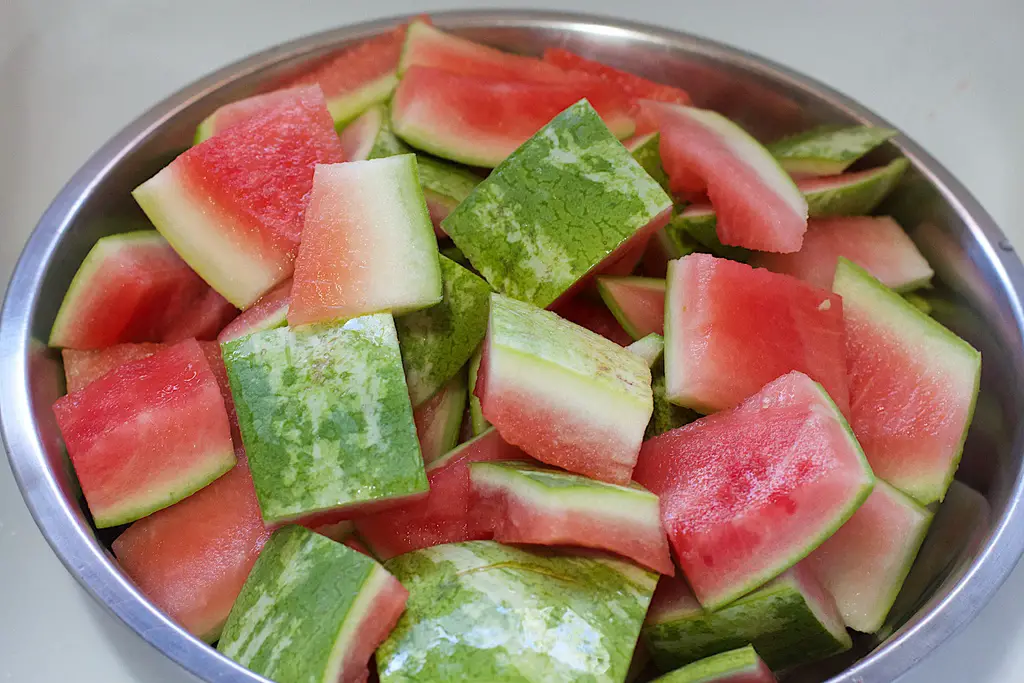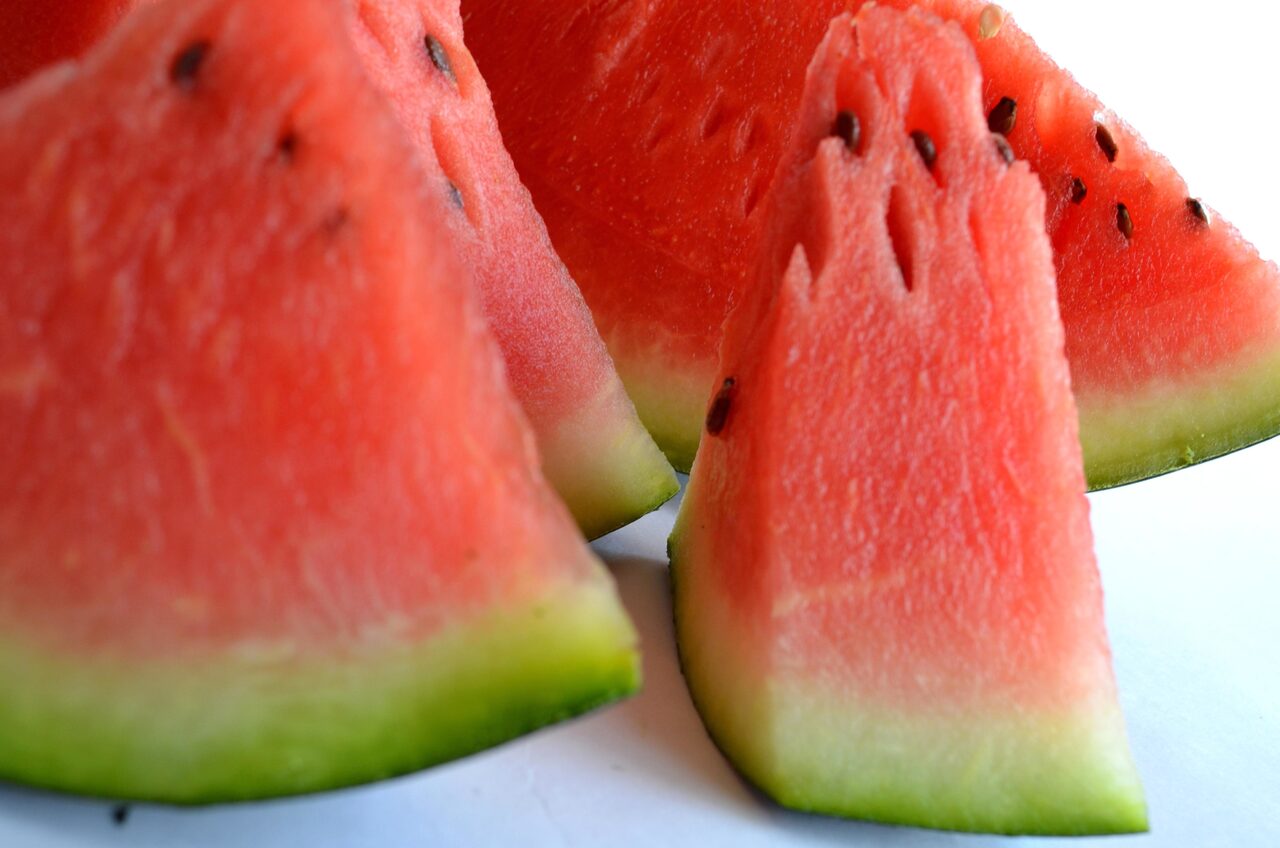Watermelon rind, seed and flesh are compostable. All parts of the watermelon are considered green material. For the best results, remember that the melon rind is hard in texture so it’s obviously not easy to decompose. Consider chopping them into small pieces before adding the rinds to your compost.
A watermelon has three layers: its green exterior, a white layer, then the pink flesh, which has a lot of water content.
That white layer is what we call a watermelon rind. It has a bland taste and a hard texture, making it inedible, and that’s how it ends up in the landfill.
But in the spirit of making the world a better place and our garden soil healthy, can you compost watermelon rinds?
That’s the focus of this piece.
Table of Contents
Can Melon Rind Be Composted?
Absolutely. You can compost melon rinds. However,remember that the melon rind is hard in texture so it’s obviously not easy to decompose.
To simplify the process, consider chopping them into small pieces. Still, there’s more to it than just chopping a whole watermelon into small chunks.
Watermelon rinds have a lot of nitrogen, calcium, nutrients, potassium, trace minerals, and moisture.
Brown materials like shredded paper and dry leaves are essential when adding melon rinds. That’s because using food waste could deny your compost pile vital oxygen.
However, a lot of green material or food waste could also create a soggy environment responsible for breeding unhealthy microbes and fungus. So you want to get rid of excess moisture.
Can You Compost Watermelon Seeds and Fruit?
Watermelon seeds and fruits are compostable. However, watermelon seeds have a hard texture, making vermicomposting challenging.
So worms often wait for the seeds to sprout or decompose before they can eat them. To give the worms an easy time, you want to crush the seeds before throwing them into your compost heap.
Another way to speed up their composting process is by adding the watermelon seeds at the center of the composting pile. This region is often very hot.
If you’re determined to compost watermelon seeds, you can help them decompose completely by letting them rest for two or more growing seasons. That offers the seeds a better chance to decompose.
Watermelon seeds can sprout in the compost bin. You can avoid this by turning your compost frequently.
The flesh of the watermelon breaks down quickly compared to the thick rind. So you want to cut the rind into smaller chunks to speed up the composting process.
How Long Does Watermelon Take To Decompose?
We’ve established that the watermelon rind takes significantly longer to rot than the pink edible flesh. That’s because the rind is more fibrous and has a structure that is more resistant to disintegration.
It may take 6 weeks to a few months for the melon rind to decompose completely. Again, it depends on the bin you are using and the size of the rinds.
Is Watermelon Rind Good Fertilizer?
Watermelon rinds are classified as green materials. They are good fertilizers.
That’s because they contain:
- Nitrogen
- Nutrients
- Moisture

Do Compost Worms Eat Watermelon Rinds?
Worms can consume the rind and flesh of a watermelon. They often start by eating the flesh of the watermelon and then move on to the rind.
Here’s an interesting fact. It could take up to 4 weeks for over 500 worms to finish eating the rind of a quarter of melon.
So you want to give these critters a helping hand by following these steps:
- Cut the rind of the watermelon into thin pieces to make it easier for the worms to decompose the rinds.
- Cover the rinds with sugar cane mulch. Alternatively, you can use coconut coir.
Red wigglers are the most suitable worms for vermicomposting and love watermelon rinds.
What’s the Best Way to Compost Watermelon
Here’s a step-by-step guide on how to compost watermelon rind:
- Cut the watermelon rind into smaller pieces – about a few inches long each.
- Put these pieces in a compost pile alongside other green compost materials like fruits and vegetables.
- Add a thin layer of brown materials (dry leaves, cardboard, or shredded newspaper) to the mixture.
*To learn about the correct way to add layers to your compost, click here.
Why Compost Watermelon Rinds?
According to research by the Environmental Protection Agency (EPA) of the United States, yard waste and kitchen scraps account for more than 30% of the garbage in landfills. That results in the formation of hazardous methane gas.
It’s also a waste of nutrient-rich components, which you can add to your home compost to get a better yield eventually.
Your trees, shrubs, flowers, houseplants, and vegetables can thrive by adding watermelon rind compost to your soil.
What Else Can You Do With Watermelon Rinds?
Watermelon rind is still useful outside the garden. Here are some DIY ideas you can try out with watermelon rinds:
1. Watermelon Rind Smoothie
The watermelon rind smoothie makes a delicious and nutritious vegan treat. It uses fruits and vegetables that are available during the summer.
This smoothie is gluten-free and does not require additional sugar. To prepare this smoothie, do the following:
- Peel and slice the rind
- Blend with 1 cup of cucumber and grapes
- Add water, pulse and serve
Watermelon rind smoothie is good for those with chronic blood pressure.
2. Watermelon Rind Preserves
You can use watermelon rind preserves like candied fruit for your spread or topping.
Boil and drain watermelon rinds. Boil sugar with water until it’s syrupy. Simmer the watermelon rinds, vanilla beans, and lemons in the syrup for 20 minutes.
Finally, put your preserves in clean jars and enjoy.
3. Fermented Watermelon Rinds
Pickled watermelon rinds can be fermented. They are great when served as a light and refreshing snack in the afternoon during the summer. Here’s a fun recipe you should try out.
The kitchen is a test lab for trying different recipes. So check out the different watermelon rind recipes on Youtube and other platforms.

